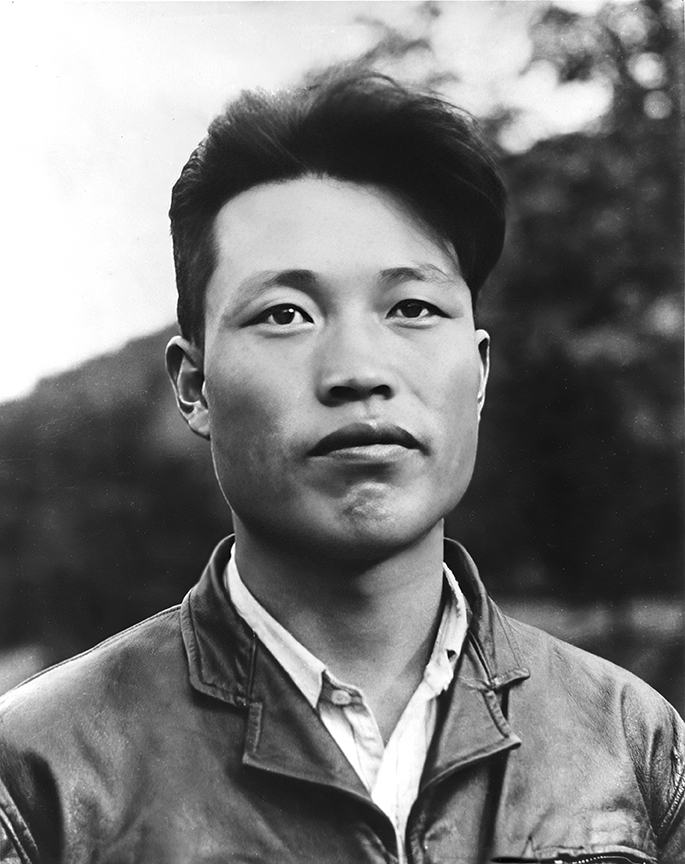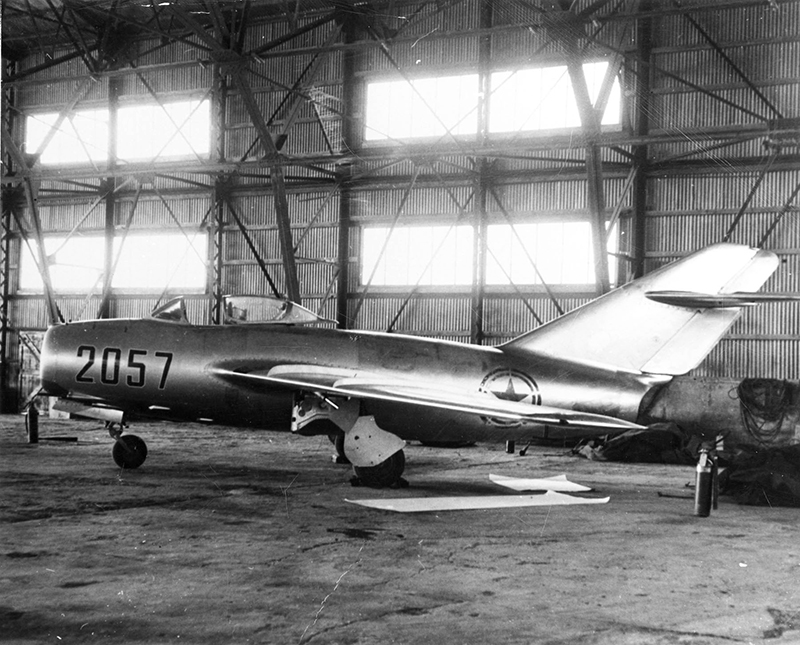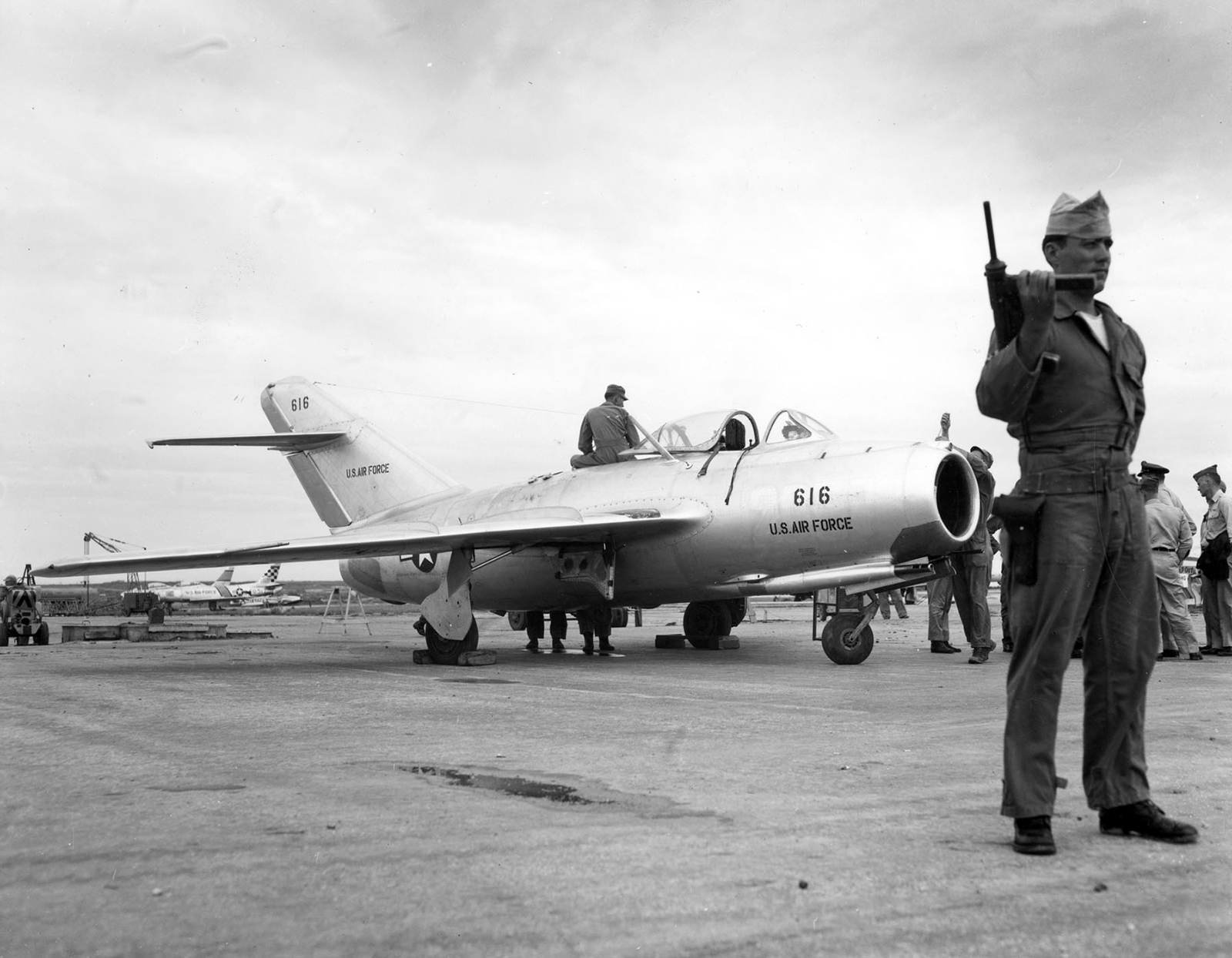A harrowing 17-minute detour changed the life of an Embry-Riddle professor who made headlines around the world as a Cold War defector.
In September 1953, less than two months after the Korean War ended with an armistice, a North Korean fighter pilot defected to a South Korean airfield in a state-of-the-art Russian fighter plane.
Flight Lt. No Kum-sok reinvented himself as Kenneth Rowe: American citizen, engineering student at the University of Delaware, aerospace engineer, author and professor at Embry-Riddle.

At 17, he attended the North Korean Naval Academy, and soloed in a Yak-18, a light basic trainer. He trained in Manchuria under Soviet advisors in the fighter jet with swept wings, the MiG-15bis. By 1950, the focus of his training shifted to aerial combat as North Korean forces invaded South Korea.
As the youngest fighter pilot in North Korea, he flew nearly 100 combat missions over the next year, knowing he would be forced to fly for the duration of the war or until his own death, barely into his 20s.
Eight weeks after the armistice was signed in 1953, he devised his escape. He was assigned to fly from Sunan, an air base in North Korea to the outskirts of the capital, Pyongyang. He set out for a different destination: Freedom.
He told one interviewer, “I figured I had a 20% chance of success. I thought that was good enough.”
When his jet landed at Kimpo Air Base near Seoul, it was initially mistaken for an F-86 Sabre, a much more likely sight on the U.S. Air Force base. As one of the greatest escapes of the Cold War, his defection made headlines throughout the West.
The U.S. got the coveted Mikoya-Gurevich MiG-15bis and Rowe, in addition to receiving political asylum, was surprised to receive a $100,000 reward for the intact plane, an offer dubbed Operation Moolah. (The reward represents well over one million dollars in today’s purchasing power.) He put the money in a trust and used the interest to bring family members to the United States and pursue his education.
In Okinawa, top-flight test pilots, then-Maj. Chuck Yeager and Capt. H.E. “Tom” Collins, assessed the design and performance of the prized aircraft. The U.S. Air Force was particularly interested in the powerful engine and hydraulically boosted ailerons.

Yeager would later stay at the home of his lifelong friend Rowe when he visited the Embry-Riddle campus in Daytona Beach to accept an honorary doctorate in 1987.
The MiG-15bis was disassembled and airlifted to Wright-Patterson Air Force Base in December 1953. It was reassembled and more exhaustively flight tested. After no country asserted a claim to the plane, it was sent to the National Museum of the U.S. Air Force at Wright-Patterson Air Force Base in 1957.
After a period as an intelligence contractor for the U.S. Air Force, Rowe resumed his education. He earned degrees in Mechanical Engineering and Electrical Engineering and became an aeronautical engineer, working for industry giants DuPont, Boeing, General Dynamics, Westinghouse and General Electric. He became an American citizen via a special bill signed by President Dwight D. Eisenhower.
In the 1980s, Rowe shifted his career from industry to academia. As Associate Professor in the Aircraft Engineering Technology Department – now Aerospace Engineering – in Daytona Beach, he taught aeronautical science for 17 years. He was a popular professor although many students did not know his heroic history, which he rarely spoke about.
A former colleague, Aerospace Engineering Professor Lakshmanan Narayanaswami remembered Rowe as “a very friendly person with a great sense of humor.”
Chris Rondeau (’93) posted on LinkedIn, “Kenneth Rowe was one of my best/favorite professors in college…We didn’t know who we had in front of us!”
Riaz Zaidi (’88, ’90, ’94) credits Rowe with his scholarly and professional accomplishments. Zaidi remembers Rowe as a remarkable teacher and friend. Zaidi was Rowe’s student assistant, grading homework and proctoring exams for thermodynamics, gas turbine engine, mechanical design and engineering economy.

“I took several engineering classes with Mr. Rowe,” Zaidi says. “He was an excellent teacher and a great mentor.”
When he visited his former professor during his retirement, Rowe gave him textbooks from his large engineering reference library. When Zaidi joined McDonnell Douglas Aerospace, Rowe recommended Zaidi to the Engineering and Technology Industry Advisory Board at Embry-Riddle. Decades later, Zaidi is still a valued advisor who makes frequent visits to campus.
Rowe made such an impression on Zaidi that 32 years later as a project engineer at Boeing, he keeps a letter of recommendation from his professor.
Rowe retired in 2000 and was honored by the Gathering of Eagles Foundation in 2008.
Rowe told his own story in his 1996 autobiography, “A MiG-15 to Freedom,” under his birth name, No Kum-sok, co-authored with Embry-Riddle Professor and head of the Humanities department, J. Roger Osterholm. (Professor Osterholm died in 2008.)
Rowe died in Daytona Beach, Florida, on Dec. 26, 2022, at the age of 90.
